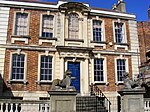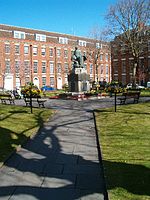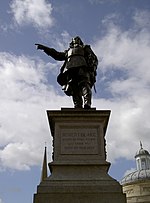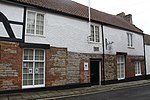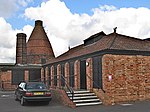Bridgwater Castle

Bridgwater Castle was a castle in the town of Bridgwater, Somerset, England. The stone castle was built around 1220 and contributed to the development of the town. It was surrounded by a moat and included a watergate giving access to the quay. In the 13th and 14th centuries the castle was involved in the Second Barons' War and Despenser War. It then fell into ruin and parts were demolished in the first half of the 17th century and a new house built. Some of the walls survived and it played a minor role in the English Civil War and Monmouth Rebellion. In the later 17th and early 18th centuries many of the remaining buildings were demolished and new residential and industrial buildings constructed, giving its name to Castle Street. The watergate and some sections of wall survive.
Excerpt from the Wikipedia article Bridgwater Castle (License: CC BY-SA 3.0, Authors, Images).Bridgwater Castle
Robins Drive,
Geographical coordinates (GPS) Address Nearby Places Show on map
Geographical coordinates (GPS)
| Latitude | Longitude |
|---|---|
| N 51.1352 ° | E -2.999 ° |
Address
Castle Veterinary Practice
Robins Drive Unit 3
TA6 4DL
England, United Kingdom
Open on Google Maps


